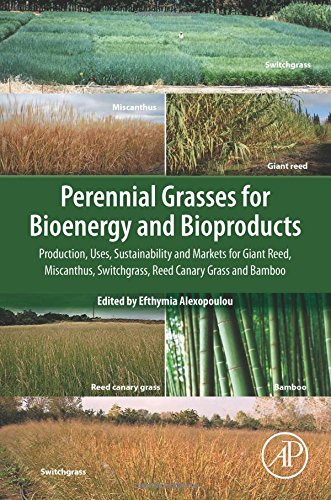

Most ebook files are in PDF format, so you can easily read them using various software such as Foxit Reader or directly on the Google Chrome browser.
Some ebook files are released by publishers in other formats such as .awz, .mobi, .epub, .fb2, etc. You may need to install specific software to read these formats on mobile/PC, such as Calibre.
Please read the tutorial at this link: https://ebookbell.com/faq
We offer FREE conversion to the popular formats you request; however, this may take some time. Therefore, right after payment, please email us, and we will try to provide the service as quickly as possible.
For some exceptional file formats or broken links (if any), please refrain from opening any disputes. Instead, email us first, and we will try to assist within a maximum of 6 hours.
EbookBell Team

4.8
24 reviewsPerennial Grasses for Bioenergy and Bioproducts: Production, Uses, Sustainability and Markets for Giant Reed, Miscanthus, Switchgrass, Reed Canary Grass and Bamboo brings together a team of international authors to explore the current utilization, sustainability and future perspectives of perennial grasses in the bioeconomy. The book begins by examining the role of these crops as feedstock for bioenergy, in particular advanced biofuels and bioproducts. It then offers five chapters, each covering one perennial grass type, namely giant reed, miscanthus, switchgrass, reed canary grass and bamboo. The book covers their breeding, cultivation, harvesting, pre-treatment, economics and characterization.
The book goes on to present the thermochemical conversion pathways for different types of feedstock. The last chapter explores issues concerning sustainability of perennial grasses, including their production in marginal lands. This thorough overview is a helpful reference for engineering researchers and professionals in the bioenergy sector, whose understanding of feedstock characterization, sustainability and production is critical in the development of conversion technologies.
Those in the industrial crops sector will benefit from discussion of various issues surrounding crop production, which can guide their feedstock cultivation, harvesting and pre-treatment for specific conversion processes or end use. The book is also a useful resource for instructors and students in Masters and PhD programs in the area of biomass and energy crops. Policy makers and government agents involved in regulating the bioenergy and bioproducts sector will find comprehensive information to guide their decision making.